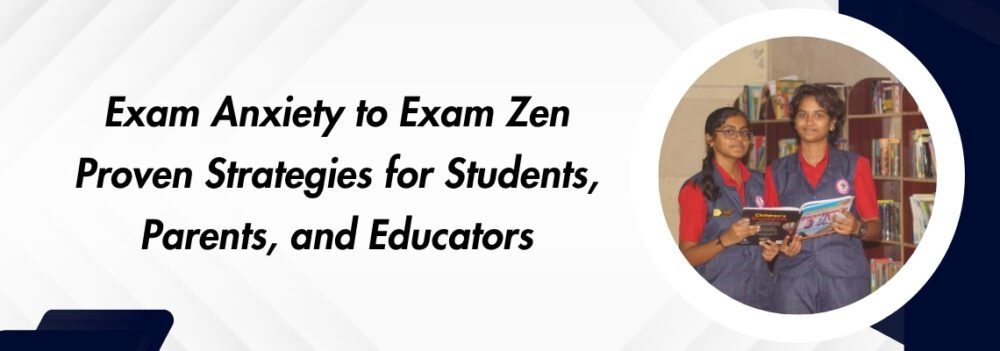Exam anxiety strategies can feel overwhelming for students, parents, and teachers alike. When test time nears, a mix of worry, tight shoulders, and restless nights can affect focus and performance in school. Yet there is a path from stress to calm, one step at a time. In this guide, we will explore simple ways to build confidence, lower tension, and help everyone—from students sitting in class to parents cheering from home—move toward a peaceful exam experience.
Understanding Exam Stress
Feeling butterflies before an important exam is normal. In fact, a little tension can sharpen the mind. But when worry grows too strong, it can make studying harder and slow down thinking on exam day. Students may find it hard to remember what they learned, and even the most prepared student can feel stuck. Recognizing how stress shows up—racing thoughts, upset stomach, or sleepless nights—is the first step in turning exam anxiety into exam zen.
Creating a Calm Study Space
The place where you study matters. Choose a quiet corner of the bedroom, living room, or even a spot in the school library where distractions are low. Keep the desk neat: a few pens, a notebook, and essential books are enough. Good lighting and a comfortable chair help keep the body relaxed so the mind can focus. Removing clutter from the study area not only clears the desk but also clears the mind, making it easier for students to dive into exam review without extra strain.
Building Consistent Study Habits
Rather than cramming all night before a class test, break study time into short, regular sessions. For example, spend thirty minutes on math in the morning and another thirty in the afternoon. This gentle rhythm keeps the brain active without causing burnout. Use a simple calendar or planner to mark exam dates and study goals. Seeing the plan in front of you can provide a sense of control and reduce last-minute panic. As each small goal is met, confidence grows—and anxiety starts to fade.
Using Relaxation Techniques

Simple exercises can help calm a racing mind. Encourage students to pause for a few deep breaths before starting a study session or when feeling stuck on a tough problem. A quick stretch or gentle neck roll can ease muscle tension. Some students find that closing their eyes and imagining a peaceful place for a minute or two can reset their focus. These brief pauses act like a reset button, helping eyes and thoughts rest before returning to work.
Supporting Each Other
Exam time is easier when no one fights it alone. Students can form small study groups, either in person or online, to quiz each other and share notes. Talking through tough concepts out loud can make ideas clearer. Parents can join the effort by checking in each evening: ask what topics came up in class, listen without judgment, and offer praise for effort rather than just results. When teachers spot signs of stress, a kind word or an offer of extra help after class can make a big difference.
Role of Parents and Educators
Parents play a key role by setting a calm tone at home. Simple routines—healthy meals, set bedtimes, and device-free time before sleep—help students rest well. Celebrating small wins, like completing a chapter or solving a tricky question, builds positive energy. Educators can support this at school by sharing exam dates in advance, giving clear study guides, and offering review sessions. By making expectations clear and providing consistent feedback, teachers help students feel ready and less alone.
Moving from Anxiety to Zen
Over time, these small steps add up. The worried student who once paced before a class test now opens the notebook with more ease. The parent who feared seeing red eyes at 2 a.m. now tucks their child in at the right hour. The teacher who worried about last-day meltdowns now leads a relaxed review session. Exam zen is not a one-time achievement but a steady shift toward balance and confidence for everyone involved.
With a calm study space, clear routines, quick relaxation breaks, and mutual support in school and at home, exam anxiety can become a signpost, not a roadblock. By using these proven strategies, students learn to trust their preparation, parents gain peace of mind, and educators see better focus in class. Together, the journey from anxiety to zen becomes a shared victory—and a model for handling any challenge with calm and confidence.


